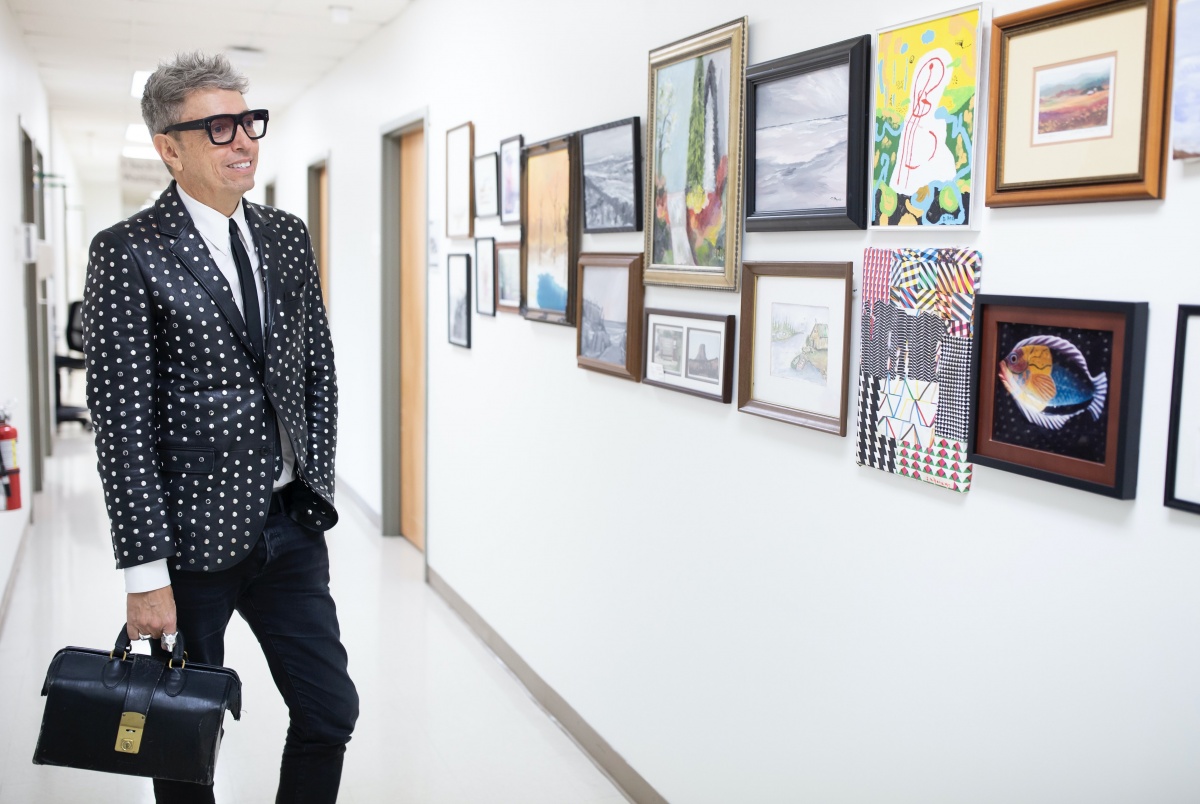
A Bold Approach to Caring for ALS Patients
Rick Bedlack, MD, PhD, is easy to spot from a distance. Instead of a white coat, the Duke neurologist wears distinct outfits when seeing patients at the Morreene Road Neurology Clinic in Durham, NC. A black leather jacket with mirrored studs and matching tie, burgundy crushed velvet suit and bow tie, a Hawaiian shirt festooned with Chinese dragons, or a pink, yellow, and green sweater vest with a Donald Duck pattern across his midsection are some of the dozens of entries in his growing wardrobe.
These outfits are more than just a fashion statement. For the past 25 years, Bedlack has specialized in treating patients with amyotrophic lateral sclerosis (ALS), an incurable neuromuscular condition that gradually destroys a person’s ability to move, speak, and breathe. Each outfit Bedlack wears is calculated to disarm patients who might be nervous, open a topic of conversation, or make at least one element of a medical visit enjoyable for both him and his patients.
“ALS is a terrifying disease,” said Bedlack. “If I can give patients a little something to look forward to with a fun outfit, then maybe the first thing they will think about is what Dr. Bedlack has on today, or ‘what an outrageous outfit’, or ‘can I get a selfie with him,’ which will make things a little easier.”
Bedlack has been riveted by ALS since he saw his first patient who would later be diagnosed with the disease. It was 1996, and Bedlack was a medical resident at Duke at the time. While giving a neurological exam—a basic assessment of a patient’s mental status, balance, and reflexes—he saw patterns that he hadn’t seen before. “There’s no physical exam like the exam of a person with ALS. I remember thinking that ALS is such a fascinating disease, and then being completely horrified when the attending physician came in and said, ‘We don’t know what causes this and there’s nothing we can do about it,’” Bedlack said.

Since then, care for ALS patients has evolved into a team effort. Today, Duke’s ALS clinic consists of 17 specialists, including neurologists like Bedlack, as well as physical, occupational, and respiratory therapists, dietitians, social workers, and speech pathologists – all who work together with patients as a team to help them preserve as much movement as possible, avoid pain and discomfort, and adjust their routines and home arrangements to live as comfortable and independent a life as possible.
While the quality of life for many ALS patients has improved over the last few decades, there are still no medications or therapies that can halt or significantly slow the progress of the condition. While the rate of disease progression varies, the average life expectancy of a person with ALS is two to five years.
Bedlack has seen his patients face ALS with extraordinary bravery, compassion, and hope, but he’s has also seen them grow frustrated with their limited treatment options. Clinical trials to test new therapies for ALS are often frustrating for patients with the condition. The first barrier is time. People with ALS simply don’t have enough of it. Clinical trials can take years from the time the studies are launched until the time results are ready to share. Placebos—inactive substances given in place of the therapy being tested—improve the reliability of a trial, but many people with ALS balk at taking a medication with no effect during the last remaining months of their lives. Physical access is also an issue. ALS limits patients’ ability to walk, eat, or perform other daily tasks, so going to a clinic for regular evaluations can be incredibly difficult for ALS patients. The COVID-19 pandemic has only exacerbated these challenges for patients.
